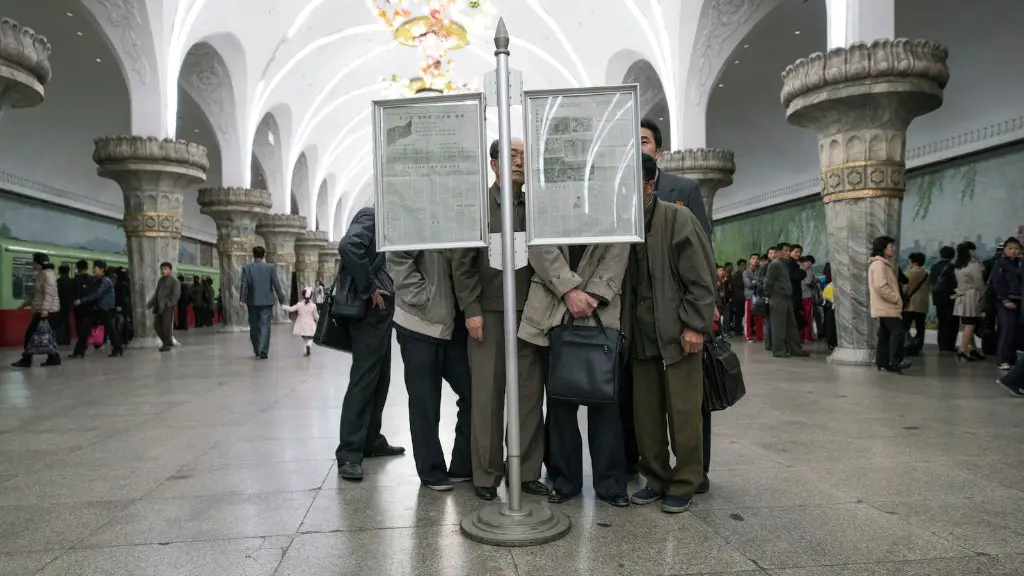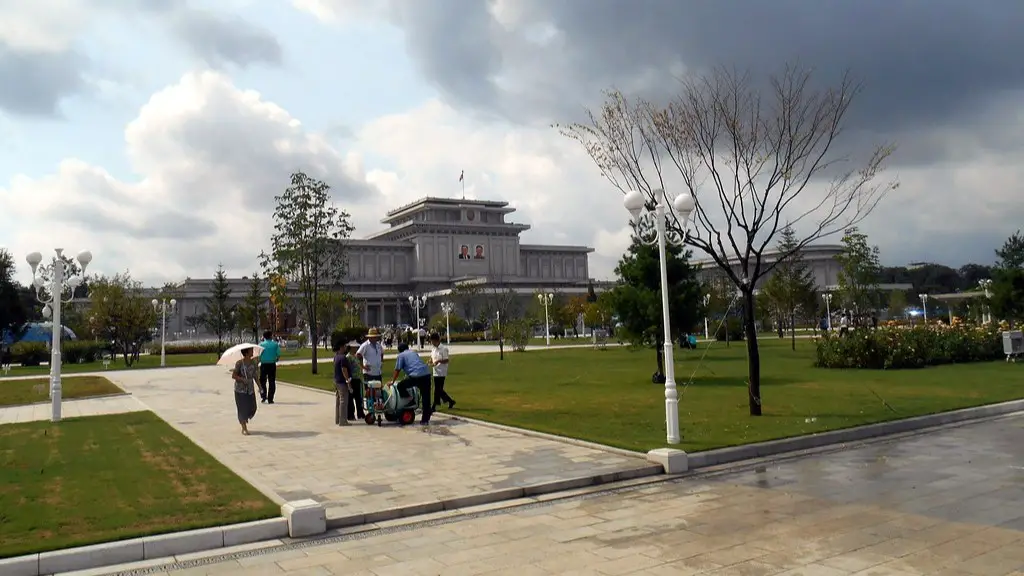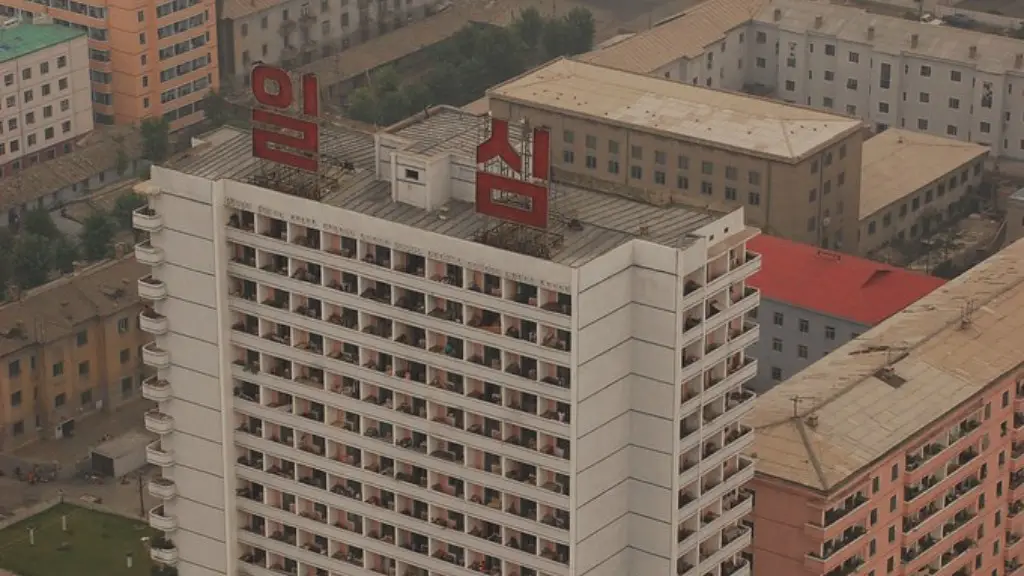The history of South and North Korea’s divergent development is a complex one, with a variety of factors contributing to the split between the two countries, some geopolitical, some historical, and all extremely meaningful.
When World War II ended in 1945 and Korea was liberated, the country was effectively divided into two areas. The 38th parallel was established as a dividing line, creating distinct North and South outposts. The United States took command of the South and the Soviet Union was placed in charge of the North. Unfortunately, few on either side of the divide saw it as a temporary measure and it soon became a permanent demarcation, creating the Koreas that exist to this day.
The divergent ideologies of the two occupying powers led over time to a deepening divide between the two Koreas. Soviet-backed and communist North Korea restricted economic and social issues, as well as curtailing human rights. In contrast, U.S.-backed South Korea embraced a more open and democratic system, underpinned by free-market capitalism.
Unlike other Cold War divides, the 38th parallel saw little direct intervention. The Cold War is part of the reason why North Korea severed its ties with the South. It refused to recognize the South’s sovereignty, while it deepened its relations with the Soviet Union and China, which resulted in large-scale military and economic aid.
The most tangible and important factor in the division of North and South Korea is the presence of the Korean War. North Korean forces invaded the South with the full backing of the Soviet Union and China on 25th June 1950, and brutal fighting raged for three years until the armistice was signed in 1953.
Since the war, North Korea has maintained an isolationist and highly authoritarian regime, while South Korea flourished with the help of U.S. and Japanese aid. During the Cold War, South Korea became a crucial component of America’s Pacific defense strategy and a major player in the region’s economic development.
South Korea has experienced tremendous growth since the end of the war and has become one of the most vibrant and successful economies in Asia.
Today, North and South Korea stand worlds apart in terms of political and economic development, with little hope of a full reconciliation any time soon. North Korea continues to be wary of the United States and its allies, while the South has steadily strengthened its ties with the West. Tensions remain high, with the North often making unrealistic demands of its Southern counterparts.
Military Tensions in the Korean Peninsula
Tensions between North and South Korea remain high due to the two countries’ nuclear ambitions. North Korea continues to develop its nuclear arsenal, in open defiance of numerous United Nations Security Council resolutions. It has tested nuclear weapons on five occasions in recent years and the US and International Atomic Energy Agency (IAEA) are most worried about the advancing technological capability of North Korea’s nuclear program.
Meanwhile, South Korea has made progress in the realm of nuclear energy, investing in quality improving technology with an emphasis on better controlling radioactive waste. As of March 2020, South Korea has 23 nuclear reactors, which generate almost 30% of the country’s electricity.
The militarization of the Korean peninsula has significant implications. South Korea is heavily guarded by US forces and Japan, and North Korea is guarded by China and Russia. The forces are implicit but clear, and any military exercises would be highly dangerous.
Although the prospects of a military confrontation between the two Koreas appear remote due to economic and political reasons, both countries are attempting to strengthen military ties to ensure the safety of their citizens.
The Role of the United Nations
The United Nations have had their Chief of Mission to both South and North Korea since the end of the Korean War. Their primary mission is to coordinate and facilitate the reunification of the two Koreas.
The countries have modified the United Nations-led peace process with an aim of securing an agreement to bring them together. It offers North Korea greater economic opportunities, while also allowing South Korea to remain a reliable ally and member of the global community. After years of diplomatic efforts and two historic summits, South and North Korea signed the Comprehensive Peace Agreement in April 2018.
The global community has been pushing North and South Korea towards dialogues and exchanges that can improve relations, but the difficulties are numerous, with both sides having long held diverging opinions about the overall approach to the reconciliation process.
The involvement of the United Nations is largely symbolic. The organisation is dedicated to the peaceful solution of the critical situation between both countries, but it cannot do it alone. The US and China have an essential role in helping create an environment where reconciliation can take place.
Implications of South and North Korea Split
The split between South and North Korea has had a huge impact on both countries, their people, the region, and the world. North Korea has pursued an isolationist policy and has been largely cut off from world markets. North Koreans are now some of the poorest people in the world, and their lack of access to the rest of the world has stifled their access to new ideas, technology, and medicines, while they also live with the daily threat of nuclear weapons.
South Korea has had a remarkable transformation in the last few decades and is now one of the top 10 economies in the world and one of the most technologically sophisticated countries in the world. It has also become an important regional power in the region, with a strong military and a vibrant economy.
The implications of the split between South and North Korea have also been felt in terms of geopolitics. The divided peninsula has kept the rest of East Asia on edge, as well as making the US uncomfortable about its presence in the region.
The split between the two Koreas has become an emblem of the global tensions that characterize the 21st century. The divide between them follows economic, political, and ideological lines, and reflects the larger struggle between the world’s great powers.
Strategies for Unification
One of the most pressing issues facing Korean unification is the lack of trust between the two countries. North Korean leaders have long feared that any attempt to interact with the South would threaten their regime, while South Korean leaders have been wary of the North’s provocative behavior.
As such, the process of establishing two Korean states will be anything but easy. Scholars have proposed a variety of strategies in addressing the situation, ranging from the gradual reunification of the two countries, to a quicker, more dramatic reunification.
These strategies range from economic approaches, such as increased economic cooperation, to integration strategies, such as open borders and greater political dialogue, to military strategies, such as reducing military forces and conducting joint military exercises.
A successful strategy for reunification would ultimately need to be based on a foundation of mutual trust and understanding between South and North Korea. As different stakeholders, from the US to China, from South Korea to North Korea, have competing interests and agendas, it will undoubtedly be difficult to come up with a workable solution.
Nevertheless, the process of bringing the two Koreas together must start somewhere. It is vital that the global community works together to bring North and South Korea closer, as the reunification of the two countries could have profound implications on global peace and security.
Sanctions Against North Korea
Due to its nuclear arms program, North Korea has been subjected to a series of economic and financial sanctions from both the United Nations and other international bodies. These sanctions have had a crippling effect on the North Korean economy, leaving the country in dire straits.
The aim of the economic sanctions is to force North Korea to abandon its nuclear weapons program in exchange for economic assistance. North Korea has refused to do so, and the sanctions have been in place for years, with no prospect of a change any time soon.
The uncertain nature of the sanctions, coupled with North Korea’s refusal to cooperate, means that they have had a detrimental effect on the North Korean economy. This has been further exacerbated by the impacts of the COVID-19 pandemic that has swept across the globe.
The economic sanctions, combined with North Korea’s refusal to cooperate with international demands, has brought the two Koreas to a point of escalating tensions that does not bode well for their long-term future.
Recent Developments
Recent developments, such as the COVID-19 pandemic and increasing tensions between the US and China, have further hampered the prospects of reunification between North and South Korea.
In response, the two Koreas have adopted a more conciliatory approach to engagement, exchanging good offices visits and arranging agreements to reduce military tensions and pursue inter-Korean economic cooperation.
More recently, they were able to come together to host the 2018 Winter Olympic Games jointly, a sign that they were able to negotiate and cooperate, if only for a short period.
As the dialogue between North and South Korea continues to progress, there is hope that a more unified Korea can emerge in the future. However, many difficult challenges remain, and the way forward is uncertain.





